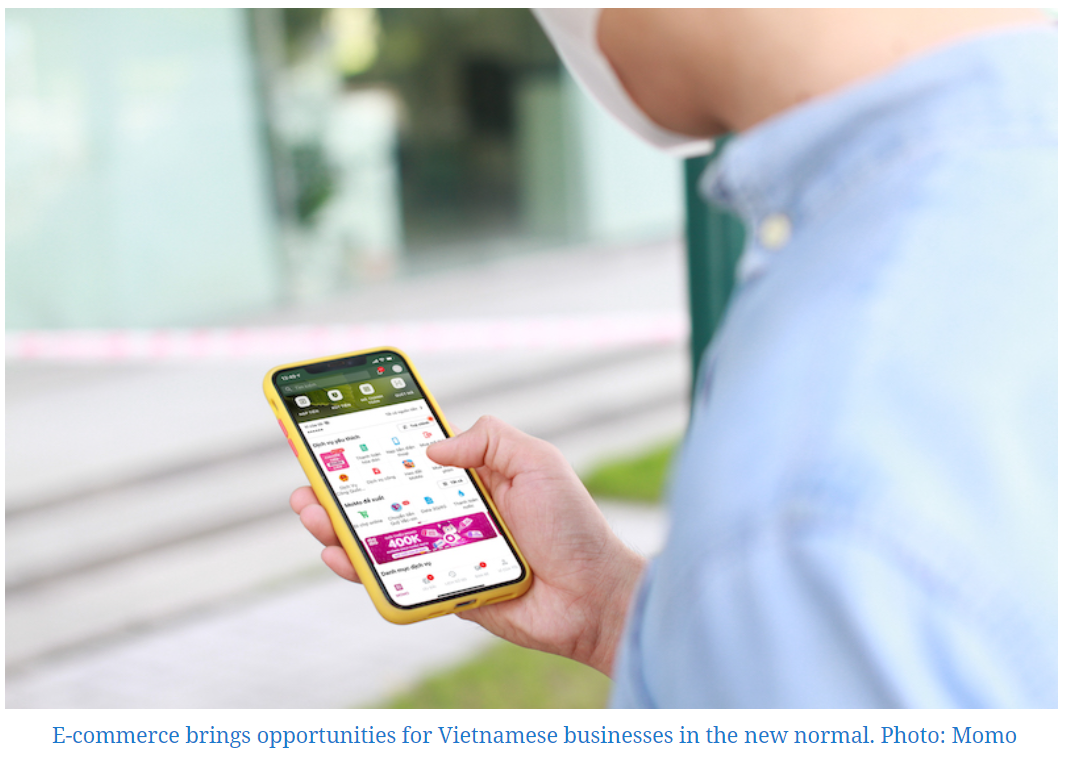E-commerce brings opportunities for Vietnamese businesses in new normal
Cross-border e-commerce will be the path that Vietnamese businesses should take to move towards reducing costs and selling more effectively.
Vietnamese businesses have a lot of opportunities in the field of e-commerce, especially in the post-Covid-19 context when consumer behavior is changing.
Five potential product categories with strong growth trends on the e-commerce platform are expected to be fashion and accessories, consumer electronics, toys, and personal preferences, furniture, and household appliances, food, and personal care, Trinh Khac Toan, Director of the Northern Region of Amazon Global Selling Vietnam, gave his prediction and added that these are also very advantageous industries for Vietnamese enterprises.
Local retail game-changers
Le Thi Ha, Head of the Policy Division at the Vietnam e-Commerce and Digital Economy Agency (iDEA) under the Ministry of Industry and Trade, shared at a recent conference on March 22 the results from a recent report in 47 countries from January 1, 2018, to August 2021 which showed that, during the pandemic period, e-commerce was the field that still recorded positive growth. The ratio of online spending in total global spending sharply increased by 14.9% during the peak of the pandemic in 2020, compared to 10.3% in 2019.
In Vietnam, statistics from the Vietnam E-commerce White Paper 2021 showed that, in the last two years, the growth rate of e-commerce was 17% per year. In 2021 alone, total retail e-commerce revenue was US$13.7 billion with an average shopping value of $270 per person per year.
Ha said the results of a Facebook survey in 2021 showed that more than 81% of Vietnamese consumers have changed their shopping habits during the outbreak of the pandemic, 92% of them claimed to continue maintaining this new behavior after the pandemic.
Customers between the ages of 25 and 45 are also increasingly shifting to online shopping, especially rural customers. The number of sellers in rural areas rose steeply by 40% in the first 11 months of 2021.
In terms of categories, items such as fashion and cosmetics were dominant in the pre-pandemic period, but during the Covid-19, food and beverages sold on the e-commerce platform achieved strong growth, notably agricultural products and fresh food. This is a very good support factor for the development of e-commerce besides changes in infrastructure and logistics policy, the iDEA’s Head of the Policy Division underlined.
Toan pointed out that cross-border e-commerce will also be the path that Vietnamese businesses should take to move towards eliminating intermediary steps, controlling products and distributors, learning customers’ feedback, positioning brands, thereby helping to reduce costs and selling more effectively.
However, more than 80% of Vietnamese enterprises have not joined any e-commerce floor. Therefore, the businesses need to identify the immediate opportunities and participate more strongly in this potential market, he emphasized.
Businesses to go online successfully
 |
| Local businesses may face some risks when making international payments. Photo: PVcomBank |
Toan recommended businesses need to prepare five steps to successfully sell on the e-commerce floor, including product strategic orientation, diversified forms of transportation, investment planning, advertising, business planning, and branding.
He noted when doing business on an e-commerce floor, enterprises need to have personnel specialized in this field, who understand the product-brand strategy and the regulations of the target market.
Vu Thi Thu, Tiki’s Chief Commercial Officer for Hanoi, also shared four principles when doing business on an e-commerce floor. Firstly, the multi-floor business helps enterprises make the most of opportunities to promote their potential. The second is to analyze the market to understand it and competitors, to use their strengths to approach niche markets.
Thu’s third principle consists of a short-term and long-term development strategy in terms of price, inventory, building customer data, strategy with existing and new customers, sales operation, consulting, and after-sales care. Finally, a long-term investment plan with e-commerce floors helps the business’ e-commerce develop sustainably.
Along with the potential of cross-border e-commerce development, there are also many risks for businesses when expanding abroad. Nguyen Trong Tinh, Director of Distribution and Sales Channel Center of Vietnam Maritime Commercial Joint Stock Bank (MSB), pointed out that businesses may face some risks when making international payments such as scams by importers, price fluctuations, political volatility, or exchange rate risks.
He suggested one of the effective risk prevention solutions for businesses is to find reliable banking services. Currently, banks are providing a variety of services such as providing reports and advising businesses on exchange rate fluctuations, inflation, and interest rates to help them choose appropriate financial solutions.
Source: http://hanoitimes.vn/e-commerce-brings-opportunities-for-vietnamese-businesses-in-new-normal-320316.html


 English
English




